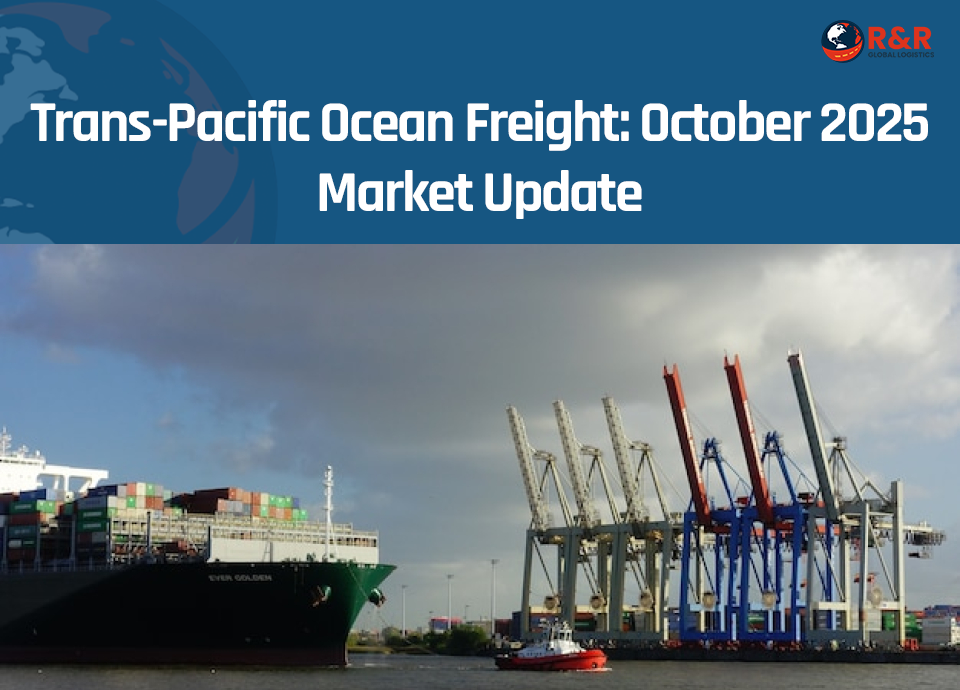Trans-Pacific Ocean Freight Update: October 2025
The Trans-Pacific supply chain faces continued volatility as shippers, BCOs, and logistics providers contend with new cost pressures, booking surges, and unpredictable schedules.
Sharp Rate Increases and New Tariffs
A new General Rate Increase (GRI) took effect on October 15, with more rises on the horizon for November 1. Carriers are blanking (cancelling) 14% of scheduled capacity between Asia and the U.S., as they try to counter falling spot rates and maintain pricing stability. The impending 100% import tariff proposal on major Chinese imports—including electronics, machinery, and consumer goods—has triggered a surge in pre-tariff bookings, adding pressure to already congested ports.
Operational Disruptions and New Port Fees
Congestion has intensified at key U.S. gateways, with several carriers now rerouting vessels or omitting port calls in response to booking spikes and ongoing capacity cuts. Effective October 14, new U.S. Customs port fees increase costs for carriers using Chinese-built or Chinese-operated vessels—adding an estimated $300–$600 per container and over $1 million per voyage. Leading Chinese carriers are expected to absorb the bulk of these new fees, but shippers should anticipate trickle-down effects across the market.
China’s Retaliation Adds Complexity
China’s reciprocal port fees on U.S.-connected vessels are further complicating Trans-Pacific operations. The full impact of these tariffs and fees remains uncertain as trade policy details continue to evolve. With the peak Chinese New Year shipping season approaching, shippers are urged to secure space early, monitor carrier updates closely, and prepare for ongoing volatility into early 2026.
What Shippers Should Do Now
- Monitor the latest carrier advisories for last-minute routing and schedule changes.
- Consider flexible shipping strategies, alternate load ports, or off-peak bookings.
- Account for higher landed costs in Q4 budgets due to new tariffs and port fees.
- Work closely with your RRGLS account team for proactive updates and customized supply chain solutions.
Staying agile and well-informed is essential as cross-border shippers navigate one of the most complex peak seasons in recent years.

